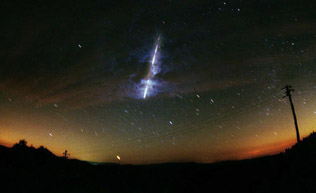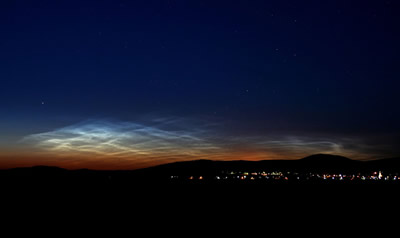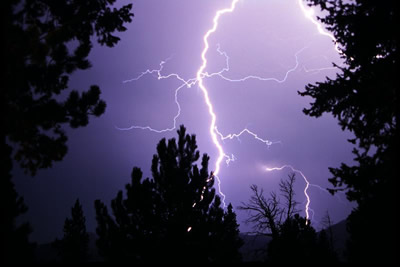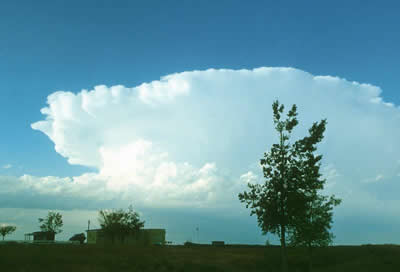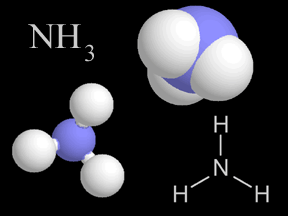Click on image for full size
Original artwork by Windows to the Universe staff (Randy Russell).
The Mesosphere
The mesosphere is a layer of Earth's atmosphere. The mesosphere is directly above the stratosphere and below the thermosphere. It extends from about 50 to 85 km (31 to 53 miles) above our planet.
Temperature decreases with height throughout the mesosphere. The coldest temperatures in Earth's atmosphere, about -90° C (-130° F), are found near the top of this layer.
The boundary between the mesosphere and the thermosphere above it is called the mesopause. At the bottom of the mesosphere is the stratopause, the boundary between the mesosphere and the stratosphere below.
The mesosphere is difficult to study, so less is known about this layer of the atmosphere than other layers. Weather balloons and other aircraft cannot fly high enough to reach the mesosphere. Satellites orbit above the mesosphere and cannot directly measure traits of this layer. Scientists use instruments on sounding rockets to sample the mesosphere directly, but such flights are brief and infrequent. Since it is difficult to take measurements of the mesosphere directly using instruments, much about the mesosphere is still mysterious.
Most meteors vaporize in the mesosphere. Some material from meteors lingers in the mesosphere, causing this layer to have a relatively high concentration of iron and other metal atoms. Very strange, high altitude clouds called "noctilucent clouds" or "polar mesospheric clouds" sometime form in the mesosphere near the poles. These peculiar clouds form much, much higher up than other types of clouds. Odd electrical discharges akin to lightning, called "sprites" and "ELVES", occasionally appear in the mesosphere dozens of kilometers (miles) above thunderclouds in the troposphere below.
The stratosphere and mesosphere together are sometimes referred to as the middle atmosphere. At the mesopause (the top of the mesosphere) and below, gases made of different types of atoms and molecules are thoroughly mixed together by turbulence in the atmosphere. Above the mesosphere, in the thermosphere and beyond, gas particles collide so infrequently that the gases become somewhat separated based on the types of chemical elements they contain.
Various types of waves and tides in the atmosphere influence the mesosphere. These waves and tides carry energy from the troposphere and the stratosphere upward into the mesosphere, driving most of its global circulation.








